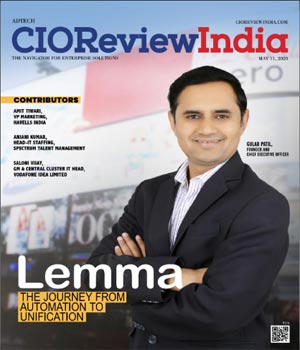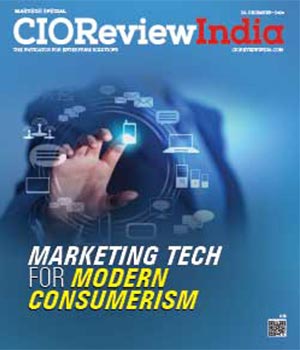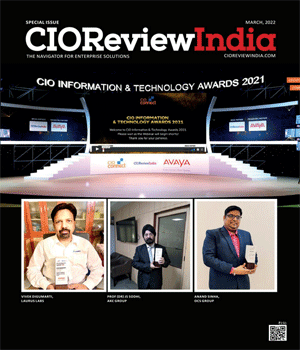
How ARVR Drives The Functioning Of The ADTech Industry?
Neeraj Sharma, Head Technical, Kellton Tech Solutions Limited | Monday, 18 February 2019, 11:51 IST
 Ads should always be appealing and eye catching, and what else other than the Augmented Reality and Virtual Reality (AR/VR) technologies can do justice to this belief. With digitization getting permeant, the Ad culture is no more bound within the traditional precincts of print. Smart devices, empowered by the Internet, are rife and customers can be reached out through disparate digital mediums and channels.
Ads should always be appealing and eye catching, and what else other than the Augmented Reality and Virtual Reality (AR/VR) technologies can do justice to this belief. With digitization getting permeant, the Ad culture is no more bound within the traditional precincts of print. Smart devices, empowered by the Internet, are rife and customers can be reached out through disparate digital mediums and channels.
The AdTech industry can now converge the diverse media and technologies to approach potential customers. At a time, when emerging technologies such as Big Data and Machine Learning force the AdTech industry into new attire, the AR/VR technologies turn out to be the jewels. However, nascent would be a more appropriate word to use for AR/VR, but the way these technologies enable advertisers to create an immersive experience through visually augmented Ads, it unequivocally helps in leaving lasting impressions on the target audience. An industry, especially AdTech is piqued by AR/VR. Advertisers are keen on exploring future opportunities with these technologies. Right from effective brand positioning to winning the customer’s loyalty, companies rely on AR/VR to evolve ideas and approaches around the customers.
Following are some of the diverse benefits of embracing the continuously evolving AR/VR technologies, which has successfully gained traction in the present and seems to have a prosperous future as well.
• Cost Efficient Advertisements
With the emergence of diverse digitized and technology-driven channels and platforms, the print’s monopoly in the Ad businesses has faded away. Increased competition and easy access to technologies have curbed the prices to advertise. Designing and launching Ad campaigns using the AR/VR technologies is comparatively cost-efficient and has a larger customer outreach.
"An industry, especially AdTech is piqued by AR/VR. Advertisers are keen on exploring future opportunities with these technologies. Right from effective brand positioning to winning the customer’s loyalty, companies rely on AR/VR to evolve ideas and approaches around the customers"
• Engaging and Interactive Ads
Assimilating the technology efficiency of AR/VR, for instance, businesses can create highly engaging and interactive Ads, offering an immersive experience across mediums - including both print and digital. It gives more room to creativity and is not space and time restraint like the conventional print medium. The fact is also supported by a report published by Mindshare that informs, “The AR experiences delivered almost double (1.9 times) the levels of engagement” when compared to other conventional components.
• Personalization of Ads
Personalization is the key to connect with contemporary customers. AR/VR supports customization of Ads that empathize with the customer’s feelings and infuse a sense of satisfaction in them. When Houzz’s, an online community on architecture and interior design, introduced its augmented reality app View in my Room - in 2017, over 2 million customers used the app since then. This proves the excitement that it would bring amidst customers. To make it clearer, let’s consider sunglasses, for instance. With AR/VR, companies selling eyeglasses can allow customers to upload their portrait and then virtually try out multiple pairs of eyeglasses. This adds a personal touch, augments customer’s decision-making ability, and encourages them to purchase the respective product.
• Promoting Products Employing Augmented Capabilities
The AR/VR technologies converge the real world with the virtual world to offer an immersive and visually enhanced experience. Educational institutions, banks, and furniture manufacturers, for instance, are employing augmented capabilities to attract customers. In other words, customers can use their smartphone’s camera to quickly go through the policies and protocols of a credit card or to see how a piece of furniture will enhance the look of their drawing room.
• Boosting Ad Content
The AR/VR technologies will enable marketers in boosting their Ad content but, again it is important for them to define specific use cases with respect to the customer’s interest. Social media platforms support multiple formats when it comes to running diverse Ad campaigns, but as far as creating immersive experiences through creative Ad content are concerned, businesses are counting upon AR/VR technologies.
AR/VR Will Add to the Future Delicacies of Advertising
The way AR/VR excites both marketers as well as customers; it is tacit that these reality technologies will drive the AdTech industry.
Augmented Reality and Virtual Reality are transforming the way customers experience and know about a company’s products and services. These technologies give a life-size approach to advertising. Marketers must tread softly as this will involve customer experience, fear, emotion, and intelligence while approaching them to become potential buyers.
CIO Viewpoint
Marketing Tech - A CIO Perspective
By Satish Panchapakesan, Senior Vice President & CIO, Arvind Fashions
Blockchain Based Cybersecurity For IoT
By Arunmani Subramanian, VP - Emerging Technologies, YASH Technologies
Data Science & Machine Learning In Fintech
By Jainendra Kumar, Head - Global Delivery Center-India & Senior Director Product Development Software, Diebold NixDorf
CXO Insights
Cyber Security - A Perspective
By Manu Sharma, Director - Information Technology And Corporate Security, OnMobile Global Limited
How Low-Code Is Transforming The Future Of Work...
By Deepak Pargaonkar, VP - Solution Engineering, Salesforce
Incorporating Blockchain Capabilities into...



.jpg)









